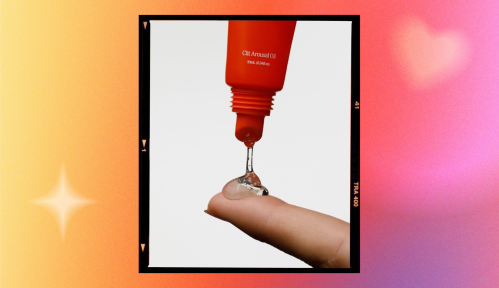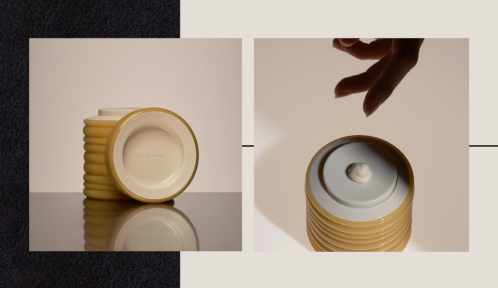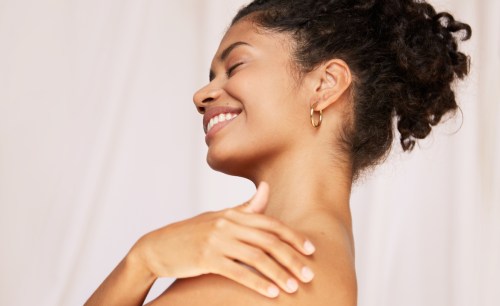Our editors independently select these products. Making a purchase through our links may earn Well+Good a commission
There are a lot of things that are really fun about getting older: no bedtime, being able to eat ice cream whenever you want, spicy margaritas. But on the other side of this naughty and nice list—right below “paying bills” and “going to work”—you’ll find under-eye wrinkles.
Experts in This Article
founder and medical director of The Wellpath
board-certified dermatologist at Schweiger Dermatology Group in New York
I noticed my own “crow’s feet” in my late twenties for the first time when a dermatologist pointed them out to me… before offering to inject them with Botox. And while I’ve always known that these fine lines were a natural part of getting older, I couldn’t help but wonder where the heck they came from, and why they suddenly decided to show up.
In search of answers, I turned to the skin-care pros. Read on to learn why we get fine lines under our eyes and discover a handful of dermatologist-recommended products for under-eye wrinkle treatment and prevention.
Best under-eye wrinkle treatments at a glance:
- Best under-eye cream: Fresh, Black Tea Firming and De-Puffing Eye Cream, $69
- Best under-eye masks: Eye Authority, PolyPeptide Collagel+ Eye Masks, $49
- Best eye cream with retinol: La Roche-Posay, Redermic R Retinol Eye Cream, $50
- Best gel eye cream: Ole Henriksen, Wrinkle Blur Bakuchiol Eye Gel Crème, $52
- Best vitamin C eye cream: Paula’s Choice, C5 Super Boost Vitamin C Eye Cream, $39
- Best SPF for under-eyes: EltaMD, UV Active Broad-Spectrum SPF 50, $34
- Best preventative sunglasses: Ray-Ban, Erika Sunglasses, $165
- Best silk pillowcase: Parachute, Silk Pillowcase, $89
- Best red light therapy tool: Solawave, 4-in-1 Radiant Renewal Skincare Wand, $169
What causes under-eye wrinkles?
According to board-certified dermatologist Nava Greenfield, MD, of Schweiger Dermatology Group in Brooklyn, age, sun exposure, genetic factors, and environmental damage are all common culprits that lead to under-eye wrinkles.
Age
“The skin around the eye is one of the thinnest areas of skin in the body and is very fragile,” says Dr. Greenfield. Over time, “the collagen in the dermis of the skin under the eyes breaks down and loses its volume and elasticity.”
Sun exposure
Sun exposure can also contribute to under-eye wrinkles. Dr. Greenfield adds that people with lighter skin tones are more susceptible to under-eye wrinkles because people with darker skin tones have a greater amount of pigment, which acts as a natural sun protectant and “will prevent an acceleration of collagen breakdown.”
Applying unnecessary pressure to your eyes
The fact that I spend a lot of time staring (okay, squinting) at a computer screen isn’t doing me any favors. “Making wrinkles and holding them causes the matrix of collagen and elastin to bend,” says Jamé Heskett, holistic MD and author of The Well Path. “The more you bend something over time, the more it has a tendency to stay in that state.” For this reason, sleeping on your side or stomach—which smoosh-es your face against your pillow—can also contribute to fine lines beneath your eyes.
Poor circulation
Under-eye wrinkles are most common among people with poor circulation (which tends to manifest as dark circles), very dry skin, and allergies. (For what it’s worth, I’ve got all three.) “Allergies cause inflammation. Inflammation increases swelling and decreases blood flow, leading to an increased rate of damage to collagen and elastin,” says Dr. Heskett. “Additionally, itching or scratching the eye area can cause repeated wear and tear on the skin.”
What are the common types of under-eye wrinkles?
You’ll know under-eye wrinkles when you see them, but what you might not know is that there are two common types that typically show up around your eyes:
Dynamic wrinkles
Dynamic wrinkles (aka “expression wrinkles”) often appear when you smile, squint, or make any sort of movement with your face. According to one study, this often is a result of losing collagen as you age.
Static wrinkles
While static wrinkles also come with age, they are different from dynamic wrinkles in that they are noticeable whether you’re contracting your facial muscles or not at all. (And over time, dynamic wrinkles can transform into static wrinkles.)
At-home under-eye wrinkle treatments
While a dermatologist might be able to offer the best treatment for under-eye wrinkles, you can also incorporate at-home methods that work to a positive effect. With that said, many natural treatments that are purported to minimize the appearance of wrinkles, such as applying cucumber slices to the eyes, aren’t confirmed to work.
If you’re looking for something effective, you might want to consider investing in products, like under-eye creams and masks, that are made with dermatologist-approved ingredients that promise to counteract wrinkles—or at the very least, keep them at bay. Here are a few picks to get you started.
Best products to treat under-eye wrinkles
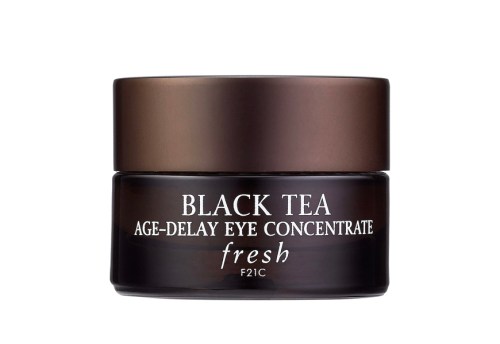
Best under-eye cream: Fresh, Black Tea Firming and De-Puffing Eye Cream — $69.00
Size: 0.5 oz
Key ingredients: Hyaluronic acid, black tea complex, vitamins C & E
In a clinical test, 91 percent of respondents said they looked less tired after using this Fresh eye cream for four weeks. It’s a lightweight, moisturizing formula that’s a good fit for those with dry, normal, or combination skin.
How to use: Apply onto the eye area morning and night, after cleansing and before moisturizing.
Pros:
- Moisturizing formula
- Lightweight, no pilling
Cons:
- Some customers say it does more moisturizing than de-puffing
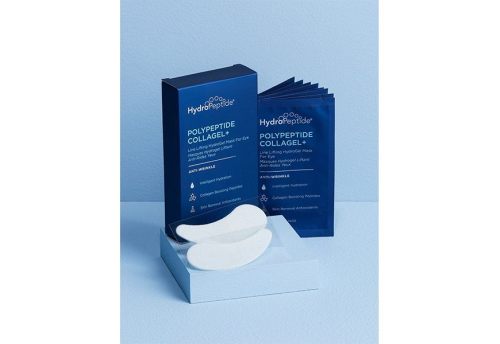
Best under-eye masks: Eye Authority, PolyPeptide Collagel+ Eye Masks — $49.00
Size: 8 treatments
Key ingredients: Proprietary Hydrogel formula, caviar extract, aloe vera
If you need an instant under-eye pick-me-up, reach for these masks, which Dr. Heskett swears will smooth out under-eye wrinkles (temporarily, at least) in 30 minutes. “I call them miracle patches,” she says, noting that they’re her go-to for use on clients before they hit the red carpet. Eye Authority uses a paraben-free, proprietary blend of collagen, vitamin E, and caviar extract, which just sounds fancy.
How to use: Apply under the eyes for 10 to 20 minutes, then follow with a hydrating eye cream.
Pros:
- Derm-recommended
- Free of parabens, phthalates, or sulfates
Cons:
- Only 8 masks per pack

Best eye cream with retinol: La Roche-Posay, Redermic R Retinol Eye Cream — $50.00
Size: 1.2 oz
Key ingredients: Thermal spring water, retinol, caffeine
Dr. Greenfield is fan of this cream for use at night. It’s made with retinol, which stimulates cell turnover, and helps reduce the appearance of fine lines, as well as caffeine. The formula is based on La Roche-Posay’s signature thermal spring water, which is rich in selenium, a key mineral that helps with cellular growth.
How to use: Apply a small amount at night before your moisturizer. If applied in the morning, always follow with an SPF. You may need to space out applications if you have sensitive skin, as retinol can be an adjustment.
Pros:
- Caffeine attacks dark circles
- Retinol and selenium encourage cell turnover
Cons:
- Retinol may be intense for those with sensitive skin
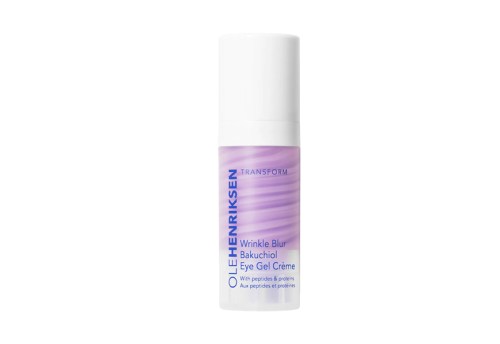
Best gel eye cream: Ole Henriksen, Wrinkle Blur Bakuchiol Eye Gel Crème — $52.00
Size: 0.5 oz
Key ingredients: Bakuchiol, orchid stem cells, peptides, plant proteins
Made with a naturally occurring ingredient, known as bakuchiol, which is often considered a retinol alternative, this lightweight cream goes onto the skin under the eyes and helps to soften wrinkles. The vegan, paraben-free formula also includes moisturizing and firming peptides and plant proteins. And, while everyone’s skin responds differently to skin-care products, Wrinkle Blur cream is recommended for use on normal, dry, oily, and combination skin.
How to use: Apply to the entire eye area after cleansing and before moisturizing.
Pros:
- Bakuchiol may be a gentler alternative to retinol for sensitive skin
- Recommended for most skin types
Cons:
- Pricier pick
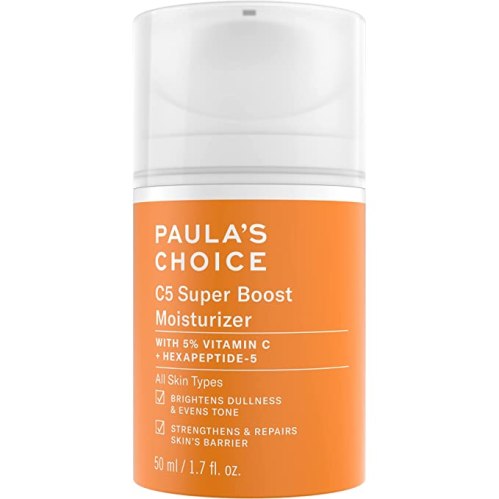
Best vitamin C eye serum: Paula's Choice, C5 Super Boost Vitamin C Eye Cream — $39.00
Size: 0.5 oz
Key ingredients: Hyaluronic acid, 5% vitamin C, peptides
This eye cream from Paula’s Choice is made with moisturizing hyaluronic acid and peptides to smooth fine lines. It also includes 5 percent vitamin C, which helps revive dullness around the eyes. As a bonus, it’s fragrance-free and paraben-free, making it a good pick for those sensitive to fragrances.
How to use: Apply a pearl-size amount under the eyes (avoiding the lash line) once or twice daily. For daytime, always finish with SPF.
Pros:
- Fragrance-free formula
- 5% vitamin C for brightening
Cons:
- Some customers reported pilling
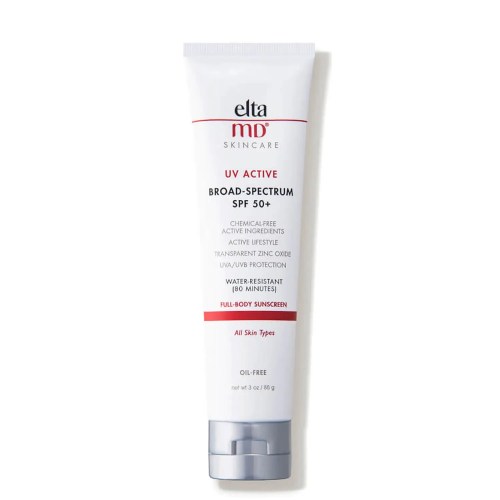
Best SPF for under-eyes: EltaMD, UV Active Broad-Spectrum SPF 50 — $34.00
Size: 3 oz
Key ingredients: Zinc, knotgrass extract, jojoba esters, vitamin E
Elta MD’s broad-spectrum sunscreen is formulated with zinc and offers SPF 50 protection. In addition to zinc, this sunscreen includes firming knotgrass extract, hydrating jojoba esters, and vitamin E for added protection against environmental toxins. It’s also water-resistant for up to 80 minutes, making it ideal for outdoor use and super sweaty days.
How to use: Apply to face after cleansing and moisturizing. Re-apply every two hours.
Pros:
- Water-resistant SPF
- Hydrating and firming formula
Cons:
- Some customers report a white sheen (from zinc)
Preventative under-eye wrinkle products
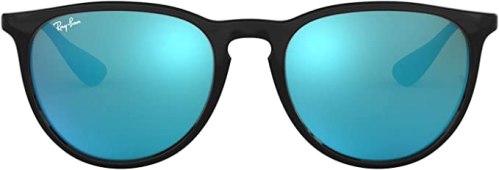
Best preventative sunglasses: Ray-Ban, Erika Sunglasses — $165.00
Size: 54mm lenses
Color options: 20+
Sunglasses like this pair from Ray-Ban can provide you with much-needed protection from the sun. The Erika sunglasses feature a plastic frame and round lenses with 100% UV protection. The lenses are also mirrored, which provide more protection than tinted varieties(read: less squinting). And, as Dr. Heskett mentioned earlier, less squinting means a stronger chance of keeping under-eye wrinkles at bay.
Pros:
- Mirrored lenses for added protection
- Lots of color options
- Highly rated
Cons:
- A bit of a splurge
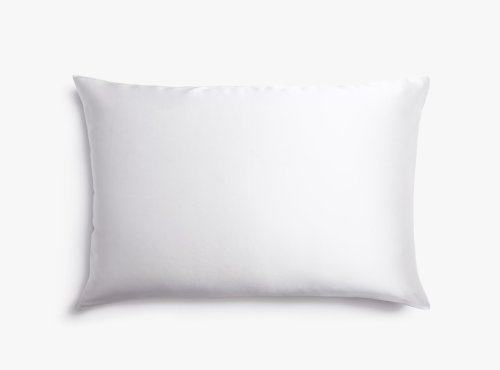
Best silk pillowcase: Parachute, Silk Pillowcase — $89.00
Size options: Standard, King
Color options: 2
The smooth and slippery feel of a silk pillowcase reduces friction between your face and the pillow itself, which helps prevent unnecessary creasing while you snooze. Made of 100 percent Mulberry silk, Parachute’s silk pillowcase is gentle on the skin (and hair). It’s also Oeko-Tex Standard 100 certified and comes with free carbon-neutral shipping and returns. Just note that silk pillowcases require a little TLC when it comes to washing, so be sure to read the care instructions!
Pros:
- Two sizes and colors
- Free, carbon-neutral shipping
Cons:
- Requires delicate washing
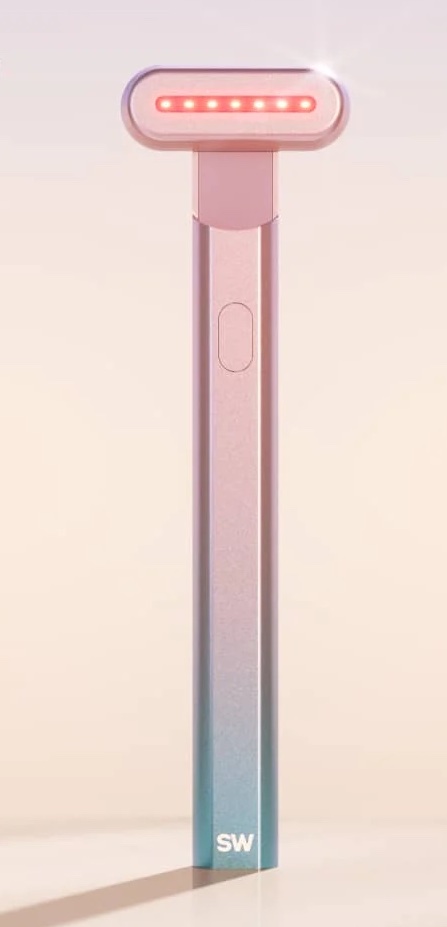
Best red light therapy tool: Solawave, 4-in-1 Radiant Renewal Skincare Wand — $169.00
Colors: 3
Returns: 30 days
Warranty: 1 year
Dermatologists are big fans of red light therapy, which can help encourage collagen production and reduce the appearance of fine lines. While this type of LED therapy was once reserved for in-office visits, Solawave’s Radiant Renewal wand lets you DIY as part of your regular skin-care routine. Plus, in addition to providing red light therapy, this vibrating wand provides galvanic current, which can help prep your skin for serums and creams and boost absorption.
How to use: On a clean, moisturized face, glide the wand across your cheeks, forehead, and under eyes in an upward and outward motion. Repeat for at least three minutes a day, three times a week.
Pros:
- Favorited by celebs
- 1-year warranty
- 3 color options
Cons:
- A bit of a time commitment
Everything you need to know about under-eye wrinkle prevention
While under-eye wrinkles are pretty much an inevitable part of the aging process, there are a few things you can do to stave them off. Below, find a few tips to care for the skin around your eyes, as per dermatologists.
1. Wear the right skin-care products at night: “Use a moisturizer and serum that’s specifically designed for the eyelids, which need a different composition of nutrients and moisture than other skin on the face and body,” says Dr. Greenfield. Additionally, “nighttime retinol is important for the prevention of fine lines and wrinkles and for collagen build-up.” And if you plan on using retinol around your eyes, just be sure to select one that’s made specifically for use in that area.
2. Always (I repeat: always!) put on SPF: Wearing a zinc-based sunscreen and sunglasses every day can also help, as can using an antioxidant-based cream that will help protect from the free radical damage that causes signs of aging.
3. Shift your sleep habits: In addition to integrating particular products into your routine, certain lifestyle changes can help keep under-eye wrinkles at bay. For the reasons mentioned above, training yourself to sleep on your back (ideally with a silk pillowcase!) and taking a time-out from your laptop really do make a difference, says Dr. Heskett.
4. Give dry brushing a whirl: Dr. Heskett adds that dry brushing your face along the lymphatic channels can increase circulation and, in turn, help prevent wrinkles on your entire visage—not just under your eyes.
How can you treat under-eye wrinkles once they’ve set in?
Once fine lines begin to work their way onto your face, there are a few things you can try to help make things smoother:
1. Invest in hyaluronic acid and antioxidants
Treating your fine lines starts with finding the right ingredients. “Hyaluronic acid plumps up the space between the collagen and elastin, giving them support so they [promote] smoother skin,” says Dr. Heskett. Other skin-smoothing stars include gentle antioxidants like caviar extract and resveratrol, which “counteract the collagen-damaging oxidation,” she says. Dr. Greenfield is also a fan of retinol moisturizers for treating wrinkles.
2. Stay away from fragrance in eye creams
“Avoid anything with a fragrance because lower eyelid skin can be very sensitive and react to allergens more commonly than skin elsewhere on the face or body,” Dr. Greenfield says. “If you have a sensitivity to an ingredient in a cream, it will likely present itself on the eyelids.”
3. Injectables and lasers can help to nix fine lines
“Micro amounts of Botox can be used under the eyes to smooth out wrinkles before they become permanently etched into the skin,” says Dr. Greenfied. “Lasers, such as Fraxel, can be used to build up collagen and smooth out the appearance of wrinkles. And hyaluronic acid fillers, such as Juvéderm or Belotero, can also help smooth out the appearance of wrinkles.”
4. In-office facials can stimulate collagen
Dr. Heskett points to treatments like microneedling with platelet-rich plasma (PRP) or radio frequency to help remodel the collagen and elastin, while carboxytherapy can increase blood flow and restore collagen and elastin. These all work in both the short and long term, so if you’re worried about under-eye wrinkles down the road, they may be worth trying out as preventative measures.
How to choose an under-eye treatment
Know your goals
There are many under-eye treatments on the market, and what might help combat under-eye bags might not necessarily work for wrinkles. Seek out ingredients that target the effects you’re after, such as vitamin C for brightening or hyaluronic acid for moisture.
Look at the ingredients list
What works for you may not work for the next person, and advice varies slightly from derm to derm. For example, Dr. Greenfield recommends retinol, while Dr. Heskett proposes hyaluronic acid and antioxidants. Still, there are some tried-and-true ingredients that everyone can agree on. Studies repeatedly show that vitamin C can minimize the appearance of wrinkles, though it’s important to note that it works best when combined with healthy lifestyle habits. And using SPF—which is known to help protect against premature signs of age—is key.
Consider your sensitivities
This might go without saying but always read the full ingredient list to look for potential allergens. As Dr. Greenfield previously mentioned, opt to steer away from eye creams that are infused with fragrance if you are sensitive to them. You also may want to steer clear of retinol until you’ve spoken with your dermatologist. And, if you’re the sensitive type (skin-wise, that is) check out our list of the best eye creams for sensitive skin.
Frequently asked questions
Do under-eye wrinkle creams work?
We wish this question had a simple answer! There’s plenty of anecdotal evidence out there to suggest that topical treatments (such as under-eye wrinkle creams) do work to reduce the appearance of fine lines over time. However, everyone’s skin is different and finding the right under-eye wrinkle treatment for you will likely require a little trial and error.
How can I tighten my under-eye wrinkles naturally?
Unfortunately, there aren’t any natural remedies that are proven to tackle under-eye wrinkles. But, if puffiness and dark circles are a concern, there are a handful of home remedies for under-eye bags you can try, such as tea bags or almond oil.
How do you build collagen under your eyes?
When it comes to boosting collagen in the under-eye skin, derms typically recommend using products that contain retinol (check out our La Roche-Posay pick above). But, to keep your skin’s natural collagen happy, it’s just as important to take preventative measures, such as wearing SPF and avoiding unnecessary pressure to the area under your eyes.
Sign up for the Well+Good SHOP Newsletter
Get exclusive deals on wellness, beauty, fitness, and food products that have been hand-picked by our editors.
Got it, you've been added to our email list.

